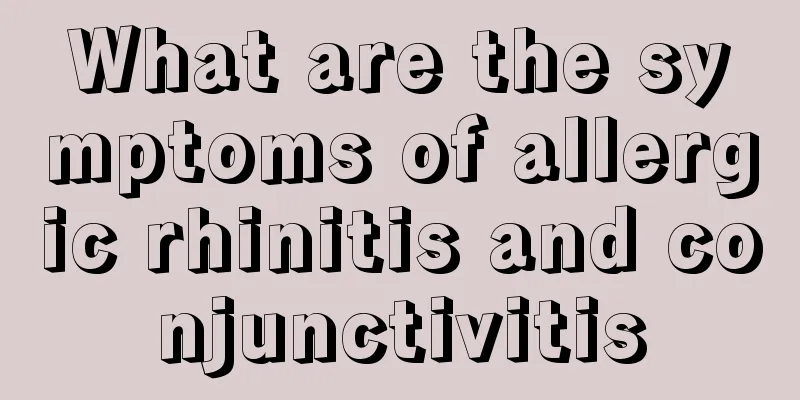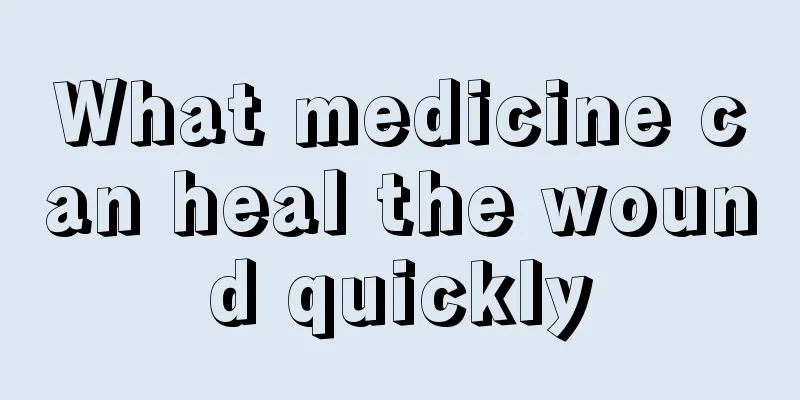What are the symptoms of allergic rhinitis and conjunctivitis

|
The nose and eyes are generally the parts that people pay the most attention to. If the nose or eyes are inflamed, it is the most worrying, because these two parts are not only related to people's appearance, but also have important functions. If you want to cure the disease quickly, you need to check and treat it in the early stages of the disease. This requires us to understand the symptoms of the disease. Today, let’s take a look at the symptoms of allergic rhinitis and conjunctivitis. Allergic rhinitis can invade the eyes through the nasolacrimal duct, causing allergic conjunctivitis, collectively referred to as allergic rhinoconjunctivitis. The main symptoms of allergic rhinoconjunctivitis are sneezing, clear runny nose, nasal congestion, itchy eyes, tearing and increased eye secretions. Children often rub their noses (picking their noses) and rub their eyes, which are caused by itchy nose and eyes. The above-mentioned typical clinical manifestations of allergic rhinitis and allergic conjunctivitis are often the main complaints of patients when they seek medical treatment, and are also one of the main bases to help doctors make a diagnosis. This disease usually has the characteristics of rapid onset and rapid disappearance. Persistent allergic rhinitis often occurs in the early morning when getting up, and its causes are often related to indoor allergens such as house dust, dust mites, mold or excessive temperature changes. Intermittent allergic rhinitis and allergic conjunctivitis are mostly related to pollen allergy. They are more severe during the daytime during the pollen season, and the symptoms and signs disappear quickly after the season. How to diagnose conjunctivitis The diagnosis of allergic rhinoconjunctivitis mainly relies on medical history, symptoms and immunological examination. A detailed history of current illness is very important for the diagnosis, differential diagnosis, judgment of severity and evaluation of expected treatment effects of allergic rhinoconjunctivitis. 1. Have a typical history of atopy (including family history of allergic diseases, personal history of other allergic diseases such as infantile eczema, urticaria or asthma, etc.) and typical clinical symptoms. 2. The main symptoms of allergic rhinitis include nasal itching, frequent sneezing, clear nasal discharge, nasal congestion, etc. The symptoms of allergic conjunctivitis include eye itching, tearing and increased eye secretions, etc. These symptoms may disappear on their own or after treatment. 3. Typical signs: Pale and edematous mucosa of the inferior turbinate or gray-blue mucosa are typical signs of allergic rhinitis. Red eyes and conjunctival congestion and increased secretions are signs of allergic conjunctivitis. |
<<: How is chronic conjunctivitis diagnosed? Diagnostic methods for chronic conjunctivitis
>>: What causes bleeding in the ears after drinking? You need to know these 5 things to note
Recommend
What to do if blisters often appear on feet
Frequent blisters on the feet may be an important...
How to perform congenital microtia correction surgery
Microtia is a relatively common ear deformity. Mo...
Experts explain the specific causes of laryngeal cancer
Laryngeal cancer is a malignant tumor that seriou...
Surgery is the first choice for treating esophageal cancer!
Esophageal cancer, also known as esophageal cance...
What to do if ovarian cancer is diagnosed during pregnancy
Ovarian cancer is a very scary malignant tumor. T...
Why is there no water down there?
Generally speaking, women will have some sticky s...
Acupuncture points on the outside of the foot
The acupoint structure on the soles of the human ...
Can I drink orange juice during menstruation?
Women feel weaker during menstruation, and some e...
Facial depression repair
If there are depressions on the cheeks, it will b...
What are the causes and treatments for nausea and vomiting when getting up in the morning
Some people feel nauseous and want to vomit when ...
Which is better, tampon or sanitary napkin?
For female friends, there are a few days every mo...
How to improve your mental state
The competitive pressure in modern society is ver...
Can ginger sprouts be eaten?
Ginger sprouts are ginger leaves. Ginger leaves h...
A pimple won't go away
Everyone knows that acne will appear on the face ...
Treatment of chronic rectal mucosal inflammation
Chronic rectal mucosal inflammation is actually a...









